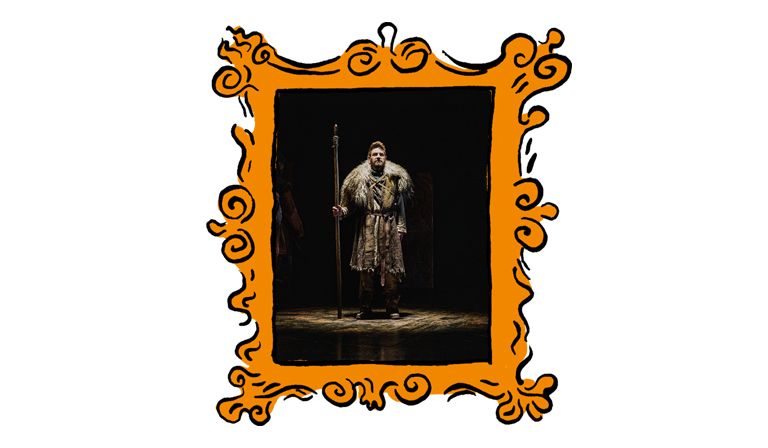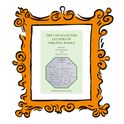William Shakespeare’s titular characters rarely speak the first lines of his plays. Shakespeare builds a world before he introduces us to its principals, luring us in with a spot of eavesdropping on the gossip of bit-players. The opening to King Lear is characteristic: we first meet the Earls of Kent and Gloucester, trading tips on which of Lear’s royal sons-in-law now holds more influence. (“I thought the king had more affected the Duke of Albany than Cornwall…”)
But when you have a celebrity in the lead, or an impresario showing strong signs of egomaniac tendencies, why let anyone else get in a word in first? Thus Kenneth Branagh’s self-directed, self-starring King Lear jumps straight in with Lear’s own set-piece monologue about the ill-fated plan to make his three daughters compete for their inheritance.
The moment is reminiscent of the 2015 Benedict Cumberbatch Hamlet, which moved “To be or not to be” to act as an opening number. (Notoriously, I didn’t like that either.) It’s a harbinger of the extraordinary monomania that runs through Branagh’s production, lines hacked wholesale from the text to abridge every role except his own, repackaging Shakespeare’s four-hour play as a two-hour personal showcase. Amid the sound and fury, there are a few moments of clarity that almost make Branagh’s Lear worth enduring—but not enough.
As I’ve written in this month’s Prospect, the texts of Shakespeare’s plays have always been disputed and unstable, and there’s never been a single, unvarying text of King Lear. This edition of the magazine includes a special focus on the 400th anniversary of the First Folio, the anthology of plays published posthumously by Shakespeare’s friends in 1623.
If you’ve read my feature on the First Folio’s impact on theatre history, you’ll know that King Lear survives in both “Quarto” (a slim edition rushed out in Shakespeare’s lifetime, with an update 11 years later in 1619) and in the First Folio anthology. The Folio King Lear is missing some Quarto scenes. Some of the Shakespeare scholars I spoke to suggest that it may have been drawn from a production that abridged the play to make it easier to tour. In which case, in mucking around with Shakespeare’s texts to burnish his own star, Branagh is only following in the footsteps of Shakespeare’s own company, including his lead actor, Richard Burbage.
But Branagh’s production makes odd and illiterate textual choices. In my feature, you’ll read former National Theatre director Nicholas Hytner talking about the impact of King Lear’s “trial scene”, in which a demented Lear enacts a fantasy of putting his daughters on trial for ingratitude. The scene only appears in the Quarto text, but many directors working from the Folio, including Hytner, still make sure to incorporate it. Branagh, by contrast, cuts it—presumably for time. Instead, he adds back in other, lesser lines from the quarto—including a version of the Fool’s bleak prophecy of England’s future. Bizarrely, he redacts the crucial context which tells us what this prophecy is about: “This prophecy Merlin shall make, for I live before his time”, the Fool tells us in other productions. Does Branagh no longer expect a West End audience to know who Merlin is? Or is bestowing upon the Fool the dignity of a proto-Merlin simply too much, in a production where only one man is allowed to stand as a mythic figure?
Branagh certainly leans in hard to the play’s setting in Ancient Britain. Stonehenge looms in the background, while props consist of boulders and wooden staves—this is Shakespeare meets the Flintstones. Joseph Kloska’s drippy, too-youthful Earl of Gloucester sports Mel Gibson’s Braveheart mullet. (Gone are Gloucester’s boasts about the “sport” of siring a bastard son and his love for astrology, either of which might have given Kloska some character to work with.) Eleanor de Rohan, who shone in Branagh’s production of Hamlet for RADA with Tom Hiddleston, is an engaging Kent, but she too feels young for the role. (Other characters refer to this Kent interchangeably as a man or a woman—consistency would be helpful.)
I suspect these characters have been aged down to make 62-year-old Branagh’s own youthful appearance less conspicuous: this is the least grey and most muscular Lear I’ve ever seen. As he rages, stripped, upon the heath, even the mud that indicates his exposure to the elements seems to have been carefully daubed in order to add maximum definition to Branagh’s calves and abdomen. Lear should not be a vanity role.
There are bright spots. As with much of his recent work, Branagh has taken advantage of his RADA presidency to showcase talented young RADA graduates (Jessie Buckley’s Perdita in his 2015 The Winter’s Tale helped launch her career). Jessica Revell is a breath of fresh air in the dual role of Cordelia and The Fool (a doubling Shakespeare’s company may have used), while Corey Mylchreest is a lythe, charismatic Edmund.
Branagh himself has moments of beauty. “Howl, howl, howl!” he bellows at the play’s conclusion, and the last howl is an additional silent scream of sudden clarity. His reconciliation with his old friend Gloucester, both broken men, has a pure stillness.
But these moments are few and far between. We all like to talk about the great Shakespearian roles; and the First Folio established Shakespeare’s plays as star vehicles. But no Shakespeare play is a one-man show, no text can be slashed and burned to showcase a single ego. Branagh may be the big-name, but his co-stars deserve better.













